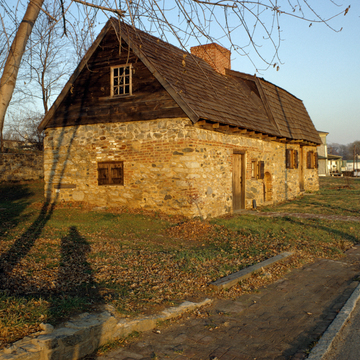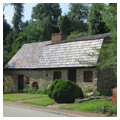Though the grain and later sawmill established by William Penn and his partners are long gone, the low, rubble stone-walled house of partner and manager Caleb Pusey on Chester Creek still stands. Pusey's importance as county sheriff and, later, surveyor of the area that forms the border between Pennsylvania and Delaware is belied by the rude nature of his house. The east section of the house dates from 1683, but its gambrel roof was added in the mid-eighteenth century; the western section is also pre-1700 and may been an unroofed animal pen before being roofed over. Framing methods within recall late medieval European practices. This is probably the only house standing in the commonwealth that can be proven to have been visited by William Penn. It affords evidence of the expedient architectural forms in the first settlement zone and compares with the slightly earlier John Boelsen cottage (c. 1680) on W. River Drive in Philadelphia's Fairmount Park. The Pusey house is operated as a museum.
You are here
Caleb Pusey House
If SAH Archipedia has been useful to you, please consider supporting it.
SAH Archipedia tells the story of the United States through its buildings, landscapes, and cities. This freely available resource empowers the public with authoritative knowledge that deepens their understanding and appreciation of the built environment. But the Society of Architectural Historians, which created SAH Archipedia with University of Virginia Press, needs your support to maintain the high-caliber research, writing, photography, cartography, editing, design, and programming that make SAH Archipedia a trusted online resource available to all who value the history of place, heritage tourism, and learning.









